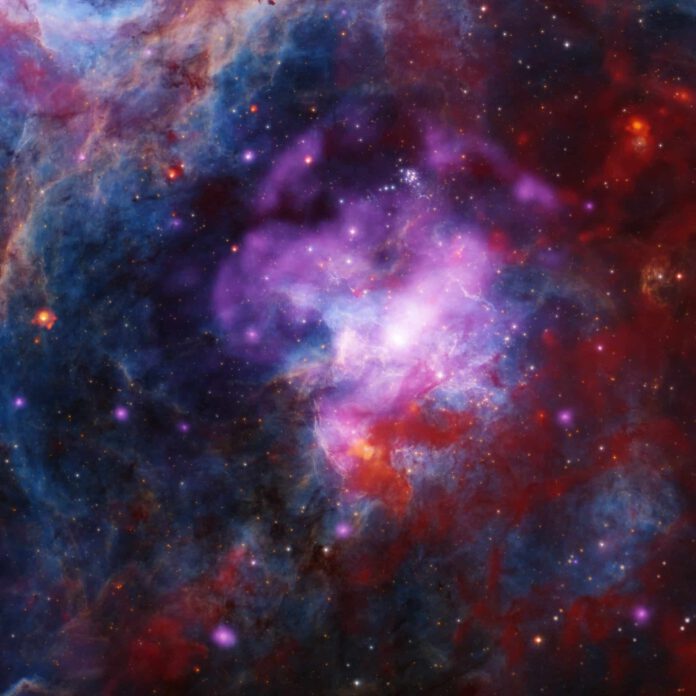
There’s no doubt that 30 Doradus B has a knack for lifting your spirits amidst the standard gloominess and current freezing nature of the January month. This supernova remnant provides an incredible burst of color—an image that’s more special than initially thought, showcasing not just one, but two exploding stars.
The Bustling Realm of 30 Dor B
30 Dor B perchance is a part of a larger region in space where stars have been continually forming over the last 8 to 10 million years. It’s a bustling galaxy spot filled with dark gas clouds, young stars, energy shocks, and superheated gas located about 160,000 light-years from Earth in the Large Magellanic Cloud, a small satellite system of our Milky Way.
Fusing Data for a Spectacular View
The striking new image of 30 Dor B is concocted by combining diverse data. First up, the deep purple represents X-ray data captured by NASA’s Chandra X-ray Observatory. The high-heat X-ray rays originate in space when dust is heated to millions of degrees Celsius. The shades of orange and cyan blue are derived from the Blanco 4-meter telescope in Chile. Infrared imagery from the Spitzer Space Telescope has contributed the surprising red hue. And finally, the black and white shades contributed by Hubble help highlight the notable features of the image.
Did You Know?
To map the region, Taiwanese astronomers used more than 2 million seconds of Chandra’s observational time on 30 Dor B and its surroundings. They discovered a weak shell of X-rays spanning about 130 light-years in diameter—a distance so vast that for comparison, the closest star to the sun is 4 light-years away. The Chandra data also unveiled that 30 Dor B contains winds that blow off a pulsar (a neutron star) known as a pulsar wind nebula.
Not One, But Two!
But the most exciting revelation was yet to come. After compiling all the data, the researchers concluded that a single supernova explosion couldn’t explain what was visible. Both the pulsar and the bright X-rays seen at the center of 30 Dor B are probably the result of a supernova explosion following the collapse of a massive star approximately 5,000 years ago.
The larger, weaker shell of X-rays, however, is too massive to have originated from the same supernova. Hence, the astronomers believe there must have been at least two explosions in 30 Dor B. The other supernova would be from a longer time ago. But it’s also plausible that more phenomenal events have occurred in the past.
Either way, it’s an exciting discovery that offers astronomers more insight into the lifespan of massive stars and the effects of their supernova explosions.











